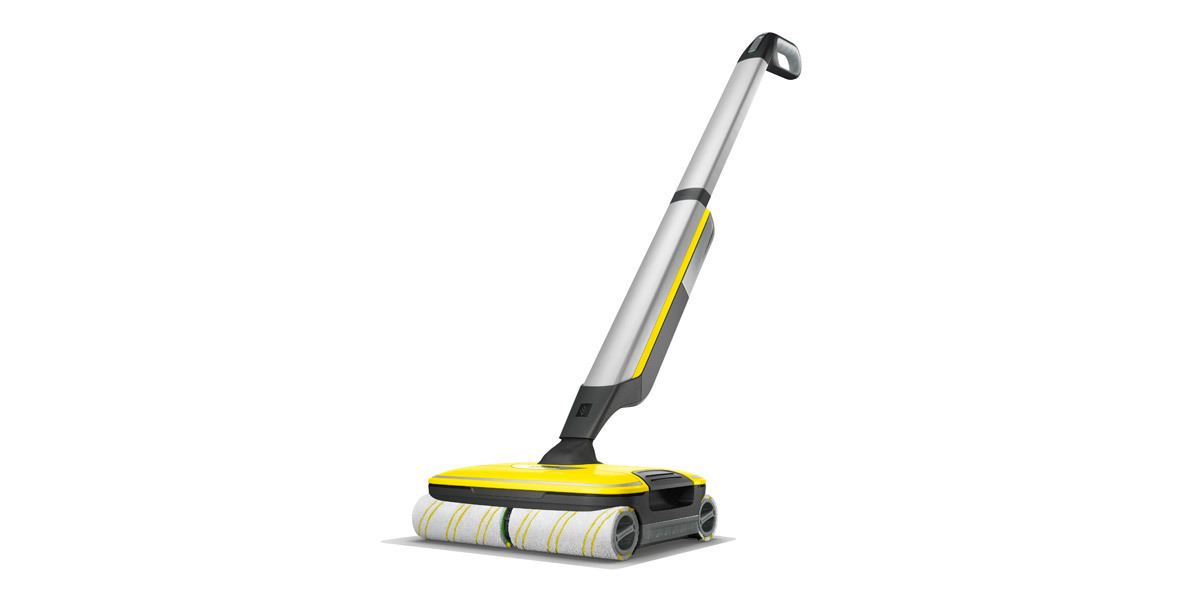Cleaning the bathroom: Dirt and limescale don't stand a chance
There's no other room in the house where cleanliness and hygiene are as important as in the bathroom. There are a variety of opinions on the right way to clean toilets, tiles, bathtubs, showers, washbasins and so on. With these expert tips, dirt and ingrained limescale in the bathroom don't stand a chance.

Quick and easy cleaning: Top tips for a clean bathroom
Whether you've got a functional wet room or a huge home spa, keeping your own bathroom clean is a top priority for many people. In addition to an overall visual impression, there are also hygienic reasons to clean the bathroom: Insufficient cleaning allows bacteria and fungi to breed easily and mould forms. High humidity levels and heat provide the ideal conditions for this, so regularly cleaning surfaces, wet rooms, toilets and tiles is important.
How often should you clean your bathroom?
For the most part, how often you should clean your bathroom depends on how often it is used. A single-person household creates less dirt than a family with multiple people, so the cleaning frequency should be adapted accordingly. Where possible, the whole bathroom should be given a thorough clean at least once a week. It is a good idea to remove soap residue and toothpaste from washbasins as soon as possible, and wipe the fittings every few days to prevent spots of limescale. It's best to wipe shiny fittings with a soft cloth every time you wash your hands – this doesn't give spots a chance to form in the first place.
Thoroughly rinsing and drying surfaces after every use helps to keep your shower cubicle and bathtub clean for as long as possible. To remove hair and dust from the floor, vacuuming every few days is often all it takes. Additionally, tiles should be mopped every 1–2 weeks to remove stubborn dirt.
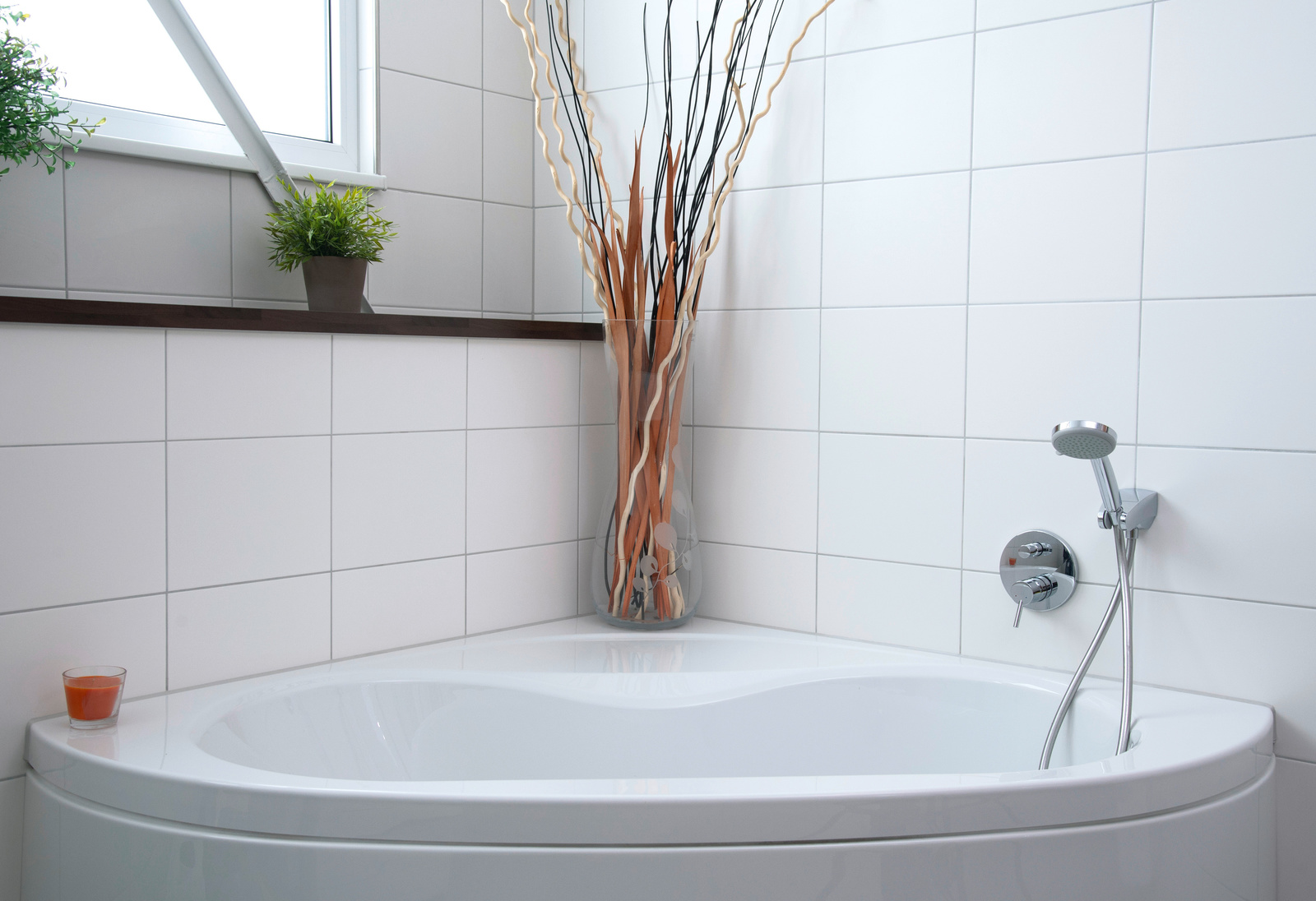
Tip
Water vapour may condense on windows in the bathroom after a bath or shower, which means that mould forms over time. Make sure to ventilate your bathroom regularly to allow the moisture to escape. The windows should be cleaned every few months.
Cleaning tasks and features of bathroom cleaning
While tiles and ceramic surfaces are generally easier to clean, there are a few things to bear in mind in the bathroom. Organic substances such as dead skin cells, hair, excrement and soap residue gather alongside mineral dirt such as lime deposits, urine scale, toilet bowl discolouration and rust. Simply wiping is often not enough to remove this dirt, meaning aggressive detergents are frequently used, such as toilet cleaners or acidic detergents, as well as powerful physical processes. However, this may damage delicate surface materials if used incorrectly.
With the right cleaning and household remedies, application tips and devices, you can have a clean bathroom in no time – without tiresome scrubbing.
Removing limescale in the bathroom
Wherever objects regularly come into contact with water, limescale develops over time. No wonder that the bathroom is often the prime location for limescale build-up, covering fittings, tiles and washbasins. However, with simple materials and a few tips, stubborn formations can be easily removed and new limescale can be prevented from forming.

How does limescale form?
Water containing lime has particularly high levels of calcium carbonate, and is created when ground water percolates through calcareous stone. The higher the concentration, the harder the water, and the more limescale forms on surfaces that it comes into contact with. Stubborn lime deposits form primarily when water is heated or evaporates, resulting in white spots particularly on fittings, washbasins, tiles and taps in bathrooms.
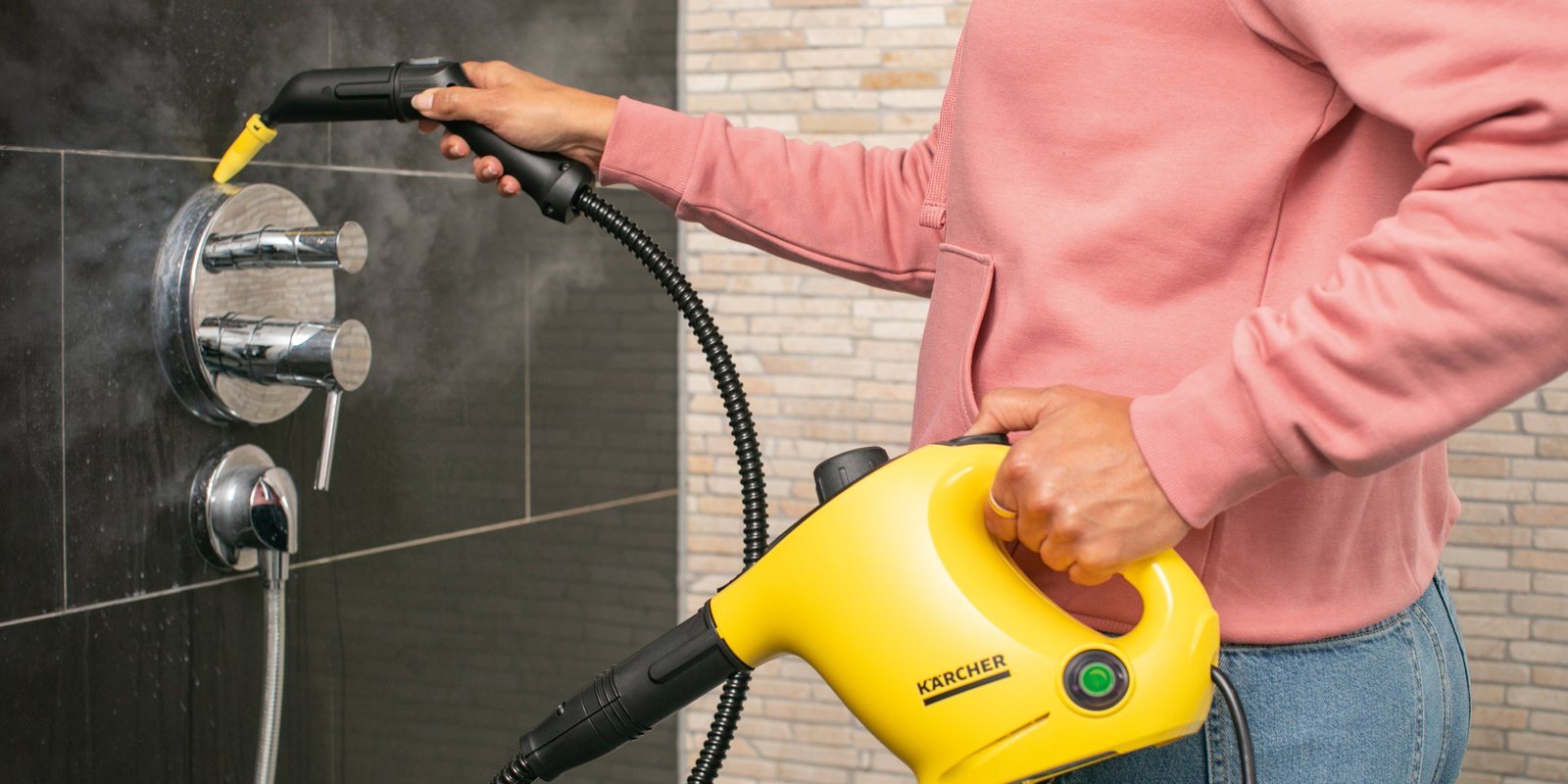

Removing limescale stains with a steam cleaner
If lime deposits are not yet very thick, they can be removed quite easily with the steam cleaner – without the need for tiresome manual scrubbing. To do so, it needs the detail nozzle and a round brush. It is better to clean delicate surfaces exclusively with the detail nozzle to avoid scratching chrome and stainless steel fittings. Hold the nozzle directly on the areas affected by limescale and steam until the limescale disappears. If this fails to remove the stubborn limescale or it is in an awkward spot, you can attach a round brush to the nozzle: You can then scrub the area with powerful blasts of steam. Even the most stubborn lime spots can be removed with direct steaming and vigorous scrubbing.
If the lime layer is very thick, lemon cleaner can be applied to the area. Wait for half an hour, then work the area with the steam cleaner. The lime residue should now be easier to remove.
The best household remedies to combat lime spots
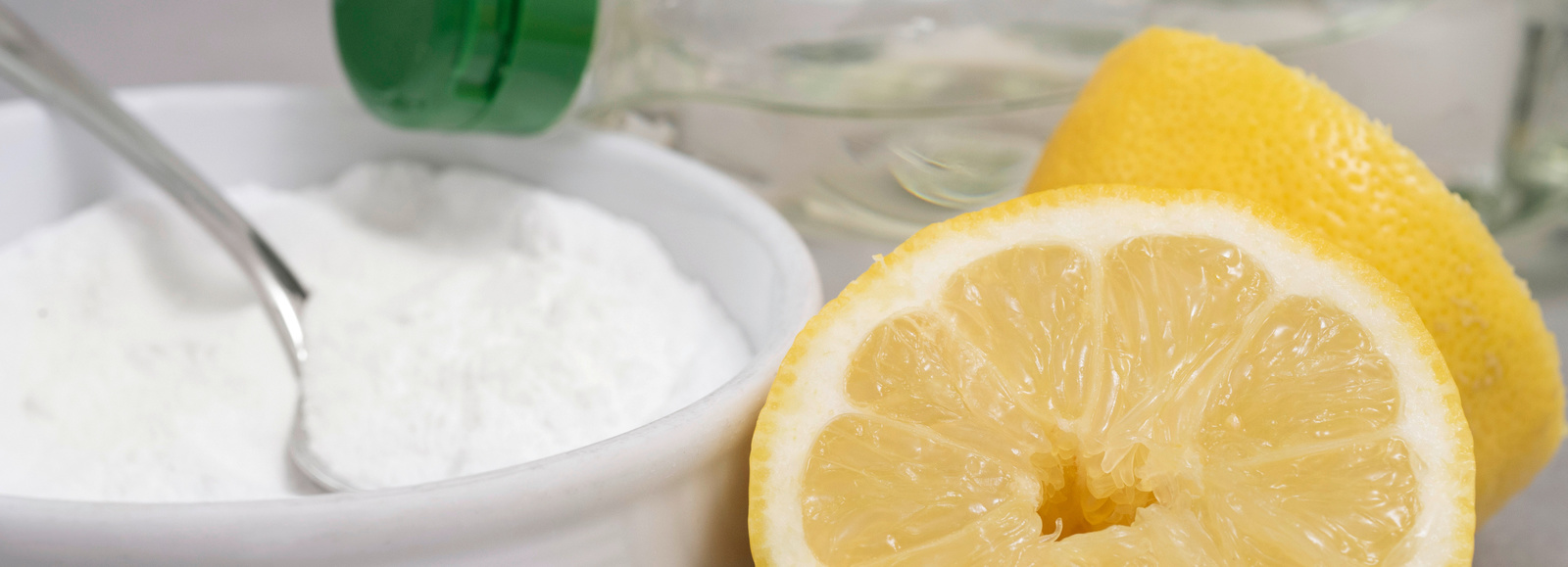
Removing limescale from aluminium with baking powder
Baking powder is useful in all sorts of ways around the house, even removing limescale, for example from aluminium. To do so, mix water and baking powder to create a thick paste. Rub the paste onto the affected areas, allow it to work for a short time and then rinse with clean water or wipe off with a damp cloth.
A positive side effect of baking powder is that it also neutralises unpleasant odours in the bathroom and even helps with blocked drains.
Removing limescale with vinegar
Vinegar is also a suitable household remedy to use to combat lime deposits. Vinegar essence can be used undiluted for significant limescale or diluted with water for lighter limescale. Citric acid has the same effect, so can be used in the same way. The best method is to soak a cotton cloth or microfibre cloth in vinegar or citric acid, then rub it on surfaces affected by limescale, such as fittings. Leave it to work for some time or overnight, then rinse thoroughly with clean, cold water. Then dry everything with a clean cloth. The acid in vinegar is also useful against stubborn urine scale.
Tip: Use the balloon trick to remove stubborn limescale from taps.
Removing limescale with toothpaste
You can also use toothpaste and an old toothbrush to remove lime residue from taps. Coat the deposits with toothpaste, leave it to work for a short time, then scrub off with the toothbrush and rinse with water. The toothpaste works like an abrasive, restoring the shine to chrome and aluminium surfaces.
Caution: Certain materials are sensitive to acids, including marble and natural stone. Therefore, do not use vinegar or citric acid to clean them. Baking powder is the better option here.
Removing limescale with detergent
If you want to use a cleaner to remove stubborn deposits, you'll need an acidic detergent with a pH between 1 and 4. The most suitable agent to use depends on the surface. It's best to test the detergent on an inconspicuous spot before using it over the whole surface. Strong acids (with a lower pH) can attack various surfaces such as base metals, cement joints, anodising aluminium and plastics. Therefore, use detergents that are as mild as possible and test to see whether they achieve a sufficient effect. There are also commercially available sanitary cleaners with an environmental certificate, such as the EU Ecolabel. These are not only better for the environment, they are also better for materials than cleaning products without a certificate.
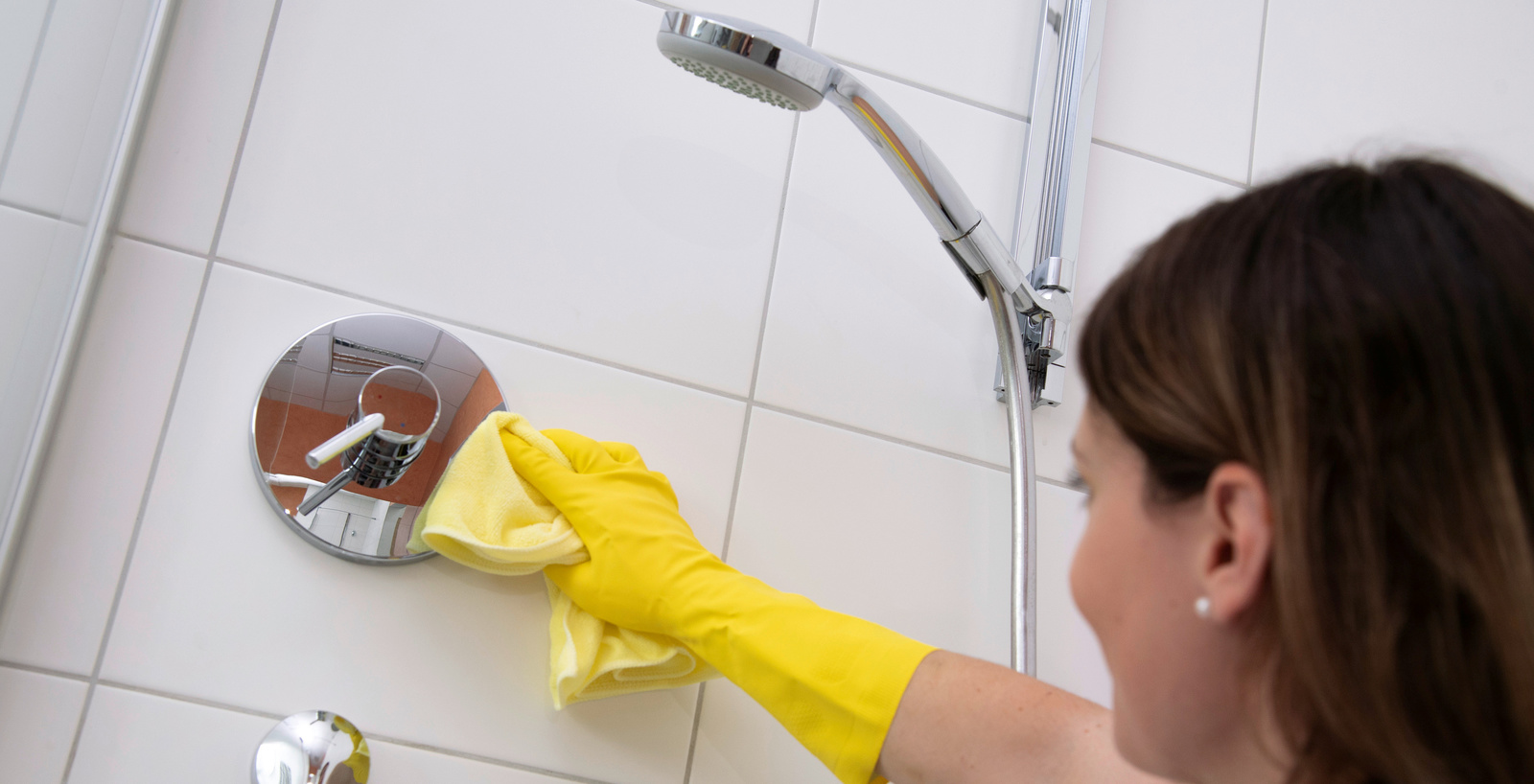
Tips to prevent lime spots forming in the first place:
-
Drying helps: Fittings on washbasins, in shower cubicles or bathtubs, as well as tiles and glass surfaces should therefore always be dried after use, for example with a microfibre cloth or a soft sponge.
-
If you're in a rush with no time to dry anything, rinse the shower cubicle, bathtub and fittings with cold water. This is because cold water forms fewer lime deposits than warm water.
-
Regularly steaming fittings, etc., with the steam cleaner will prevent future lime deposits from forming because the production of steam demineralises the water, meaning the steam does not leave behind any lime residue or streaks.











